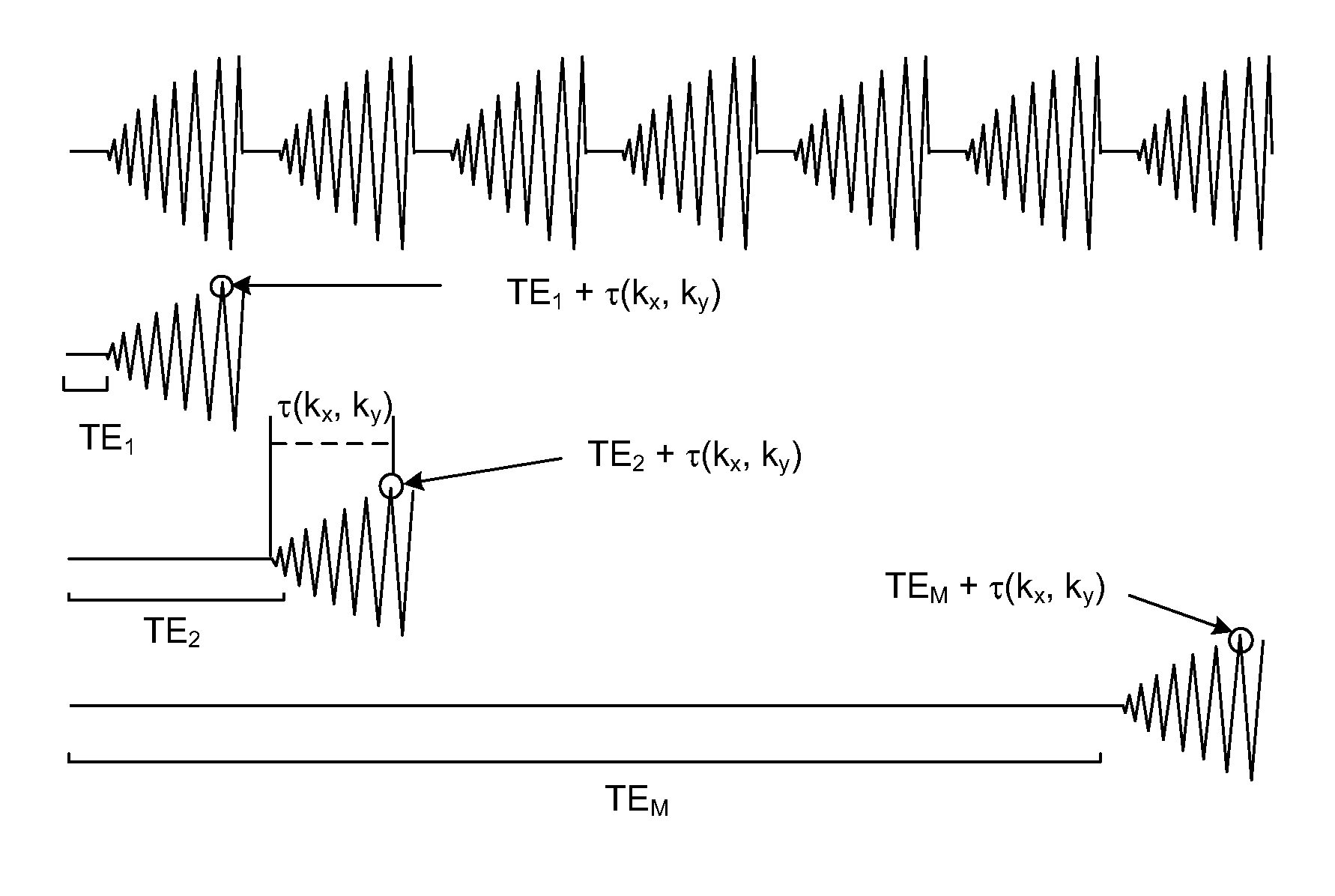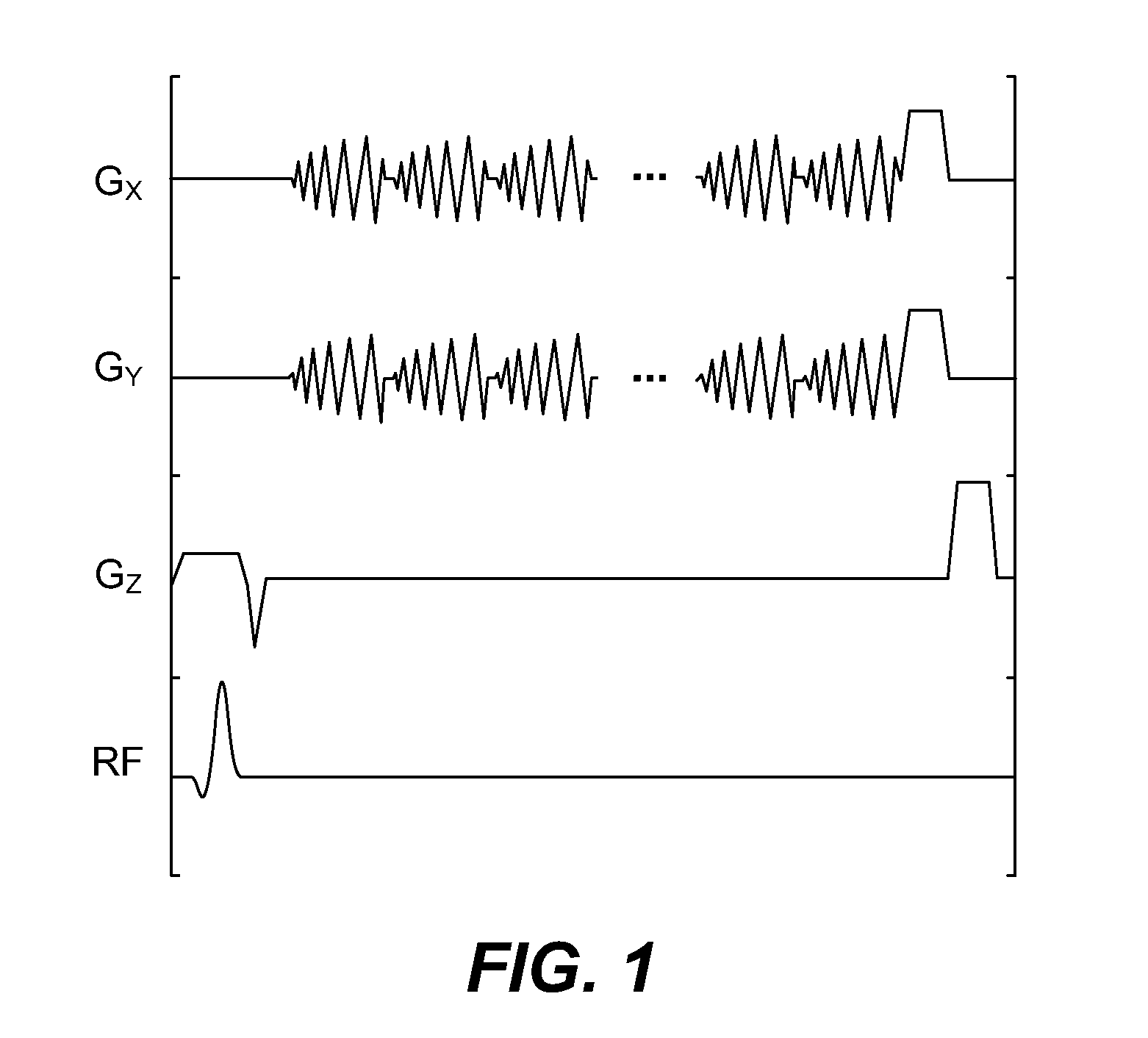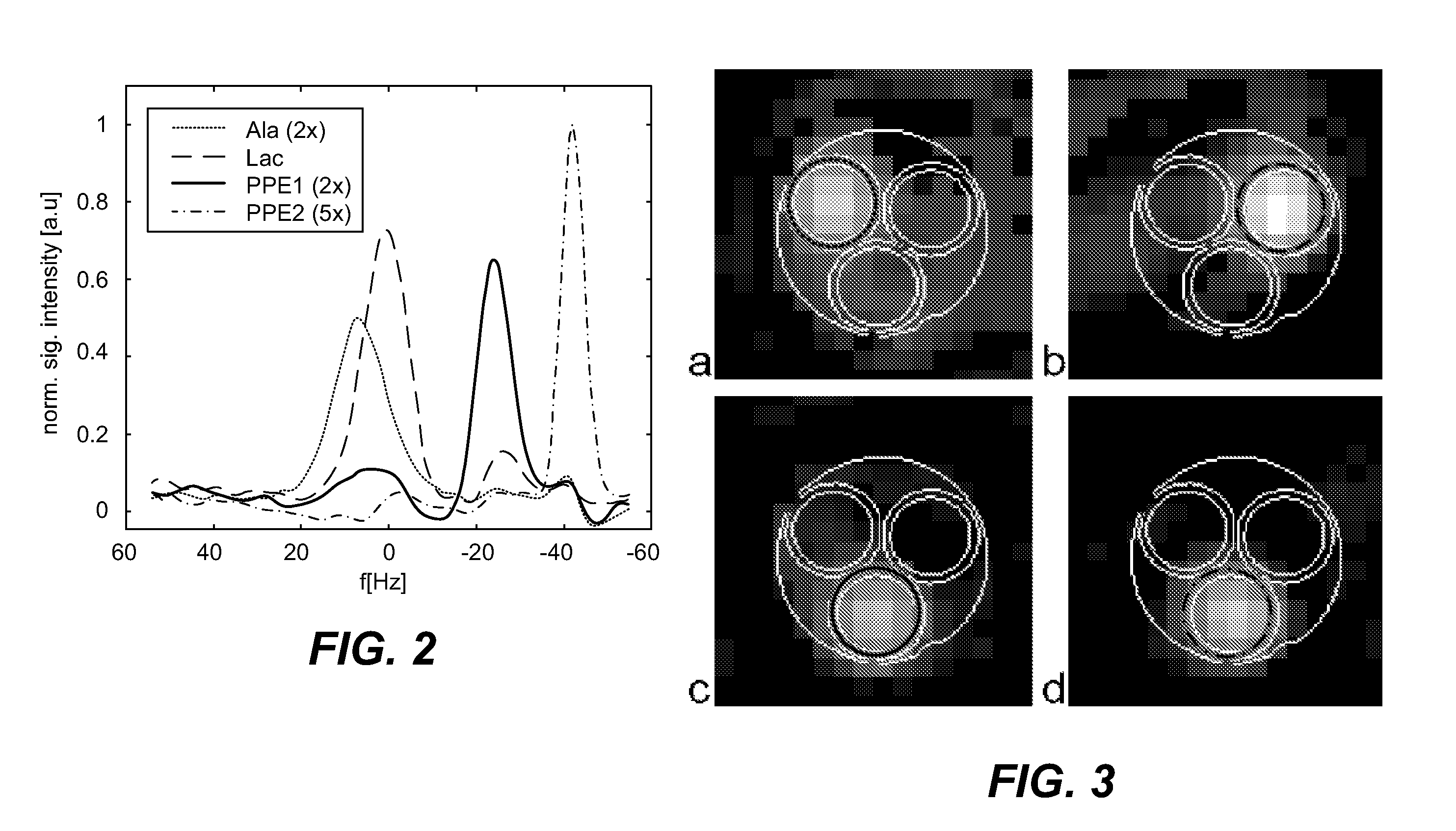Fast metabolic imaging of systems with sparse spectra using spiral CSI
a metabolic imaging and sparse spectra technology, applied in the field of magnetic resonance spectroscopy, can solve the problems of low sensitivity, inability to recover enhanced signals, and decay of magnetization towards its thermal equilibrium value, so as to improve acquisition parameters and minimize acquisition time
- Summary
- Abstract
- Description
- Claims
- Application Information
AI Technical Summary
Benefits of technology
Problems solved by technology
Method used
Image
Examples
Embodiment Construction
[0024]The invention will be described with reference to one embodiment of hyperpolarized MR spectroscopy in which 13C labeled lacatate (Lac), alanine (Ala), and pyruvate-pyruvate hydrate C1-C2 ester (PPE1, PPE2) are imaged.
[0025]In accordance with a feature of the invention, a spiral chemical shift imaging (spCSI) sequence is employed for rapid collection of the sparse spectra. Such a sequence is illustrated in FIG. 1 for a single shot or a three-shot. The sequence is designed for a slice-selective excitation pulse.
[0026]Spiral CSI Pulse Sequence has a slice-selective excitation pulse—duration of 1.8 ms, flip angle: 23°, and slice thickness: 5.4 mm, the spiral waveform design has a FOV=8×8 cm2, 16×16 matrix. A single-shot spCSI has 1 spatial interleaf, 32 spiral lobes, with SW=109.7 Hz and NEX=60. A 3-shot spCSI has 3 spatial interleaves, 64 lobes, SW=276.2 Hz and NEX=20. Repetition time, TR, is TR=2 s, 8 dummy excitations for total acquisition time: 2:16 min. Only the data acquired...
PUM
 Login to View More
Login to View More Abstract
Description
Claims
Application Information
 Login to View More
Login to View More - R&D
- Intellectual Property
- Life Sciences
- Materials
- Tech Scout
- Unparalleled Data Quality
- Higher Quality Content
- 60% Fewer Hallucinations
Browse by: Latest US Patents, China's latest patents, Technical Efficacy Thesaurus, Application Domain, Technology Topic, Popular Technical Reports.
© 2025 PatSnap. All rights reserved.Legal|Privacy policy|Modern Slavery Act Transparency Statement|Sitemap|About US| Contact US: help@patsnap.com



